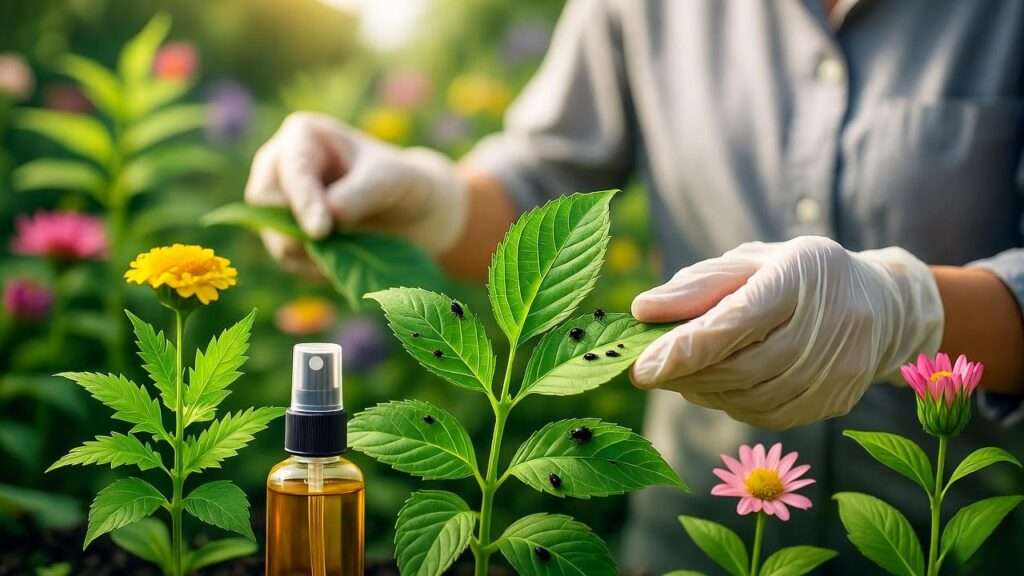Picture this: you’re tending to your lush garden or vibrant houseplants, only to spot tiny black bugs on plants scurrying across leaves or buzzing around the soil. Your heart sinks—your green babies are under attack! 🌿 Don’t worry, these pesky invaders, like aphids or fungus gnats, are common but manageable. As a horticulturist with over a decade of experience in plant care and pest management, I’ve helped countless gardeners banish these critters and restore their plants to glory. In this comprehensive guide, you’ll learn how to identify these tiny black bugs, understand why they’re targeting your plants, and apply expert-backed solutions to eliminate them for good. Expect practical tips, organic remedies, and prevention strategies to keep your garden thriving! 🌼
Understanding Tiny Black Bugs on Plants 🕵️♀️
What Are Tiny Black Bugs on Plants?
Tiny black bugs on plants are often small pests like aphids, fungus gnats, spider mites, or thrips. These insects, though small, can cause big problems, from yellowing leaves to stunted growth. Each pest has distinct traits: aphids are soft-bodied and cluster on stems, fungus gnats hover around soil, spider mites create fine webs, and thrips leave silvery streaks on leaves. Accurate identification is the first step to effective treatment, as each pest requires a tailored approach. Misidentifying them can waste time and worsen the damage, so let’s dive into their characteristics.
Why Are These Bugs Attracted to Your Plants? 🌿
Several factors make your plants a pest magnet. Overwatering creates moist soil, perfect for fungus gnats. Poor drainage or high humidity invites spider mites and thrips. Weakened plants—due to nutrient deficiencies, inadequate light, or physical damage—are more vulnerable to infestations. For example, a nitrogen-deficient plant may attract sap-sucking aphids. Environmental factors, like warm indoor conditions or crowded plant arrangements, also play a role. Expert Insight: Stressed plants release chemical signals that attract pests, so maintaining plant health is your first line of defense.
Identifying the Culprits: Common Tiny Black Bugs 🐜
Aphids
Aphids are tiny, pear-shaped insects, often black or dark green, that cluster on new growth or undersides of leaves. They suck plant sap, leaving a sticky residue called honeydew, which can attract ants or cause sooty mold. Signs include curled leaves, stunted shoots, and yellowing foliage. Aphids also transmit plant viruses, making them a serious threat. Check new growth or buds for clusters of these pests.
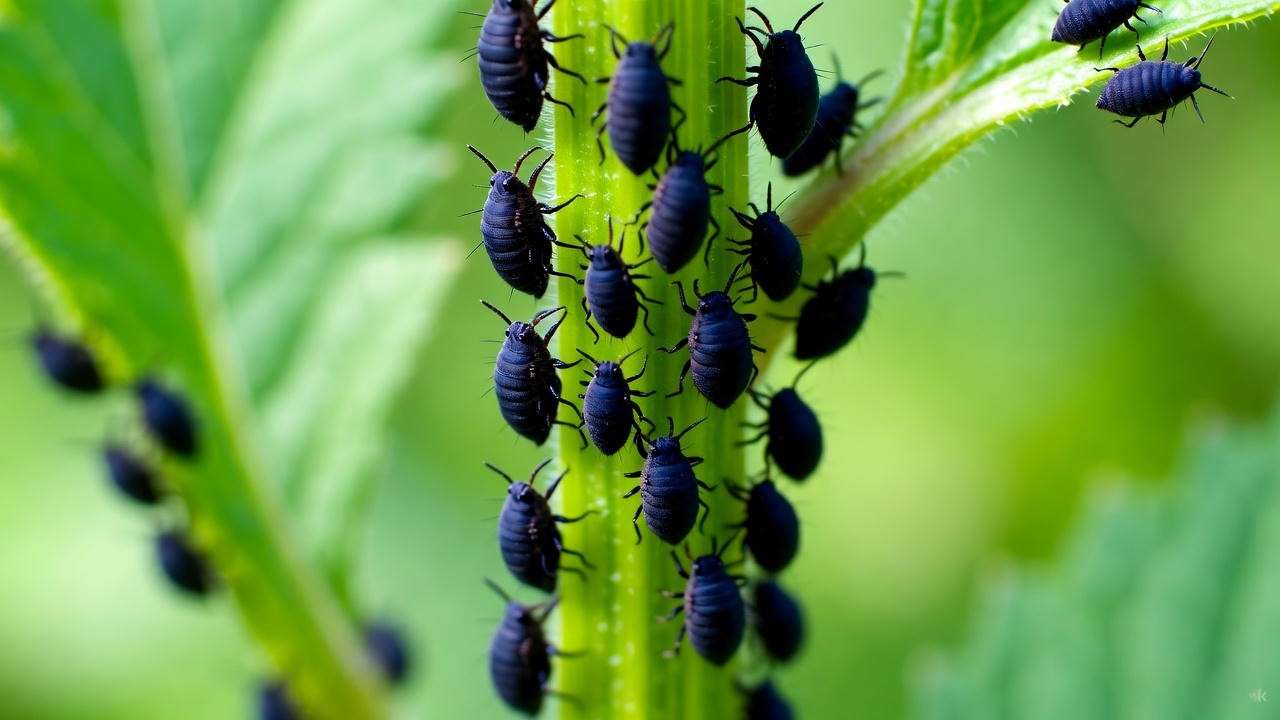
Fungus Gnats
Fungus gnats are small, dark flies that hover near soil or plant bases. Their larvae, which live in moist soil, feed on roots, causing wilting or poor growth. You might notice these pests when watering, as they’re disturbed and fly up. Overwatered houseplants are prime targets. Look for tiny black flies or larvae in the top inch of soil.
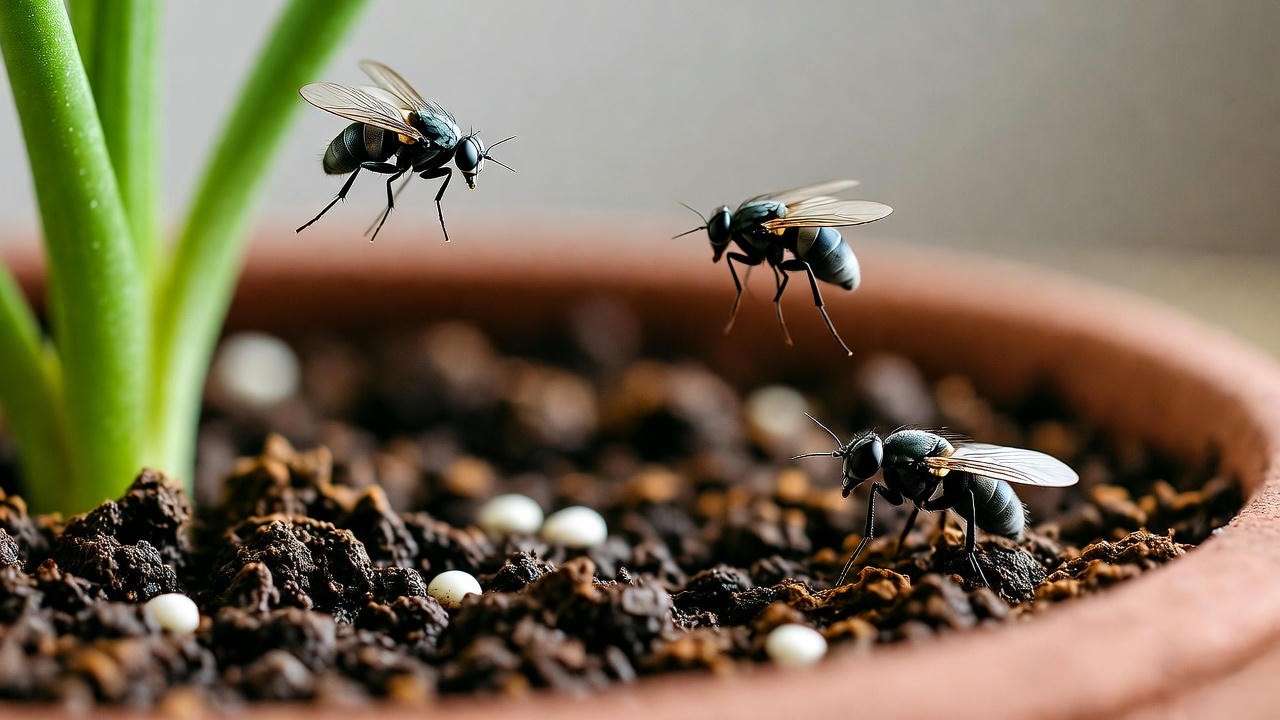
Spider Mites
Spider mites are microscopic pests that may appear as tiny black or reddish specks. They thrive in dry, warm conditions and spin fine webs on leaves or stems. Signs include speckled, yellowing leaves or a dusty appearance. Severe infestations can cause leaves to drop. Use a magnifying glass to spot these pests or their webbing.
Thrips
Thrips are slender, dark insects that move quickly across leaves or flowers. They leave silvery streaks or patches on foliage, often with tiny black fecal spots. Affected leaves may become distorted, and flowers may fail to open. Thrips are tricky to spot due to their speed, but a close inspection reveals their damage.
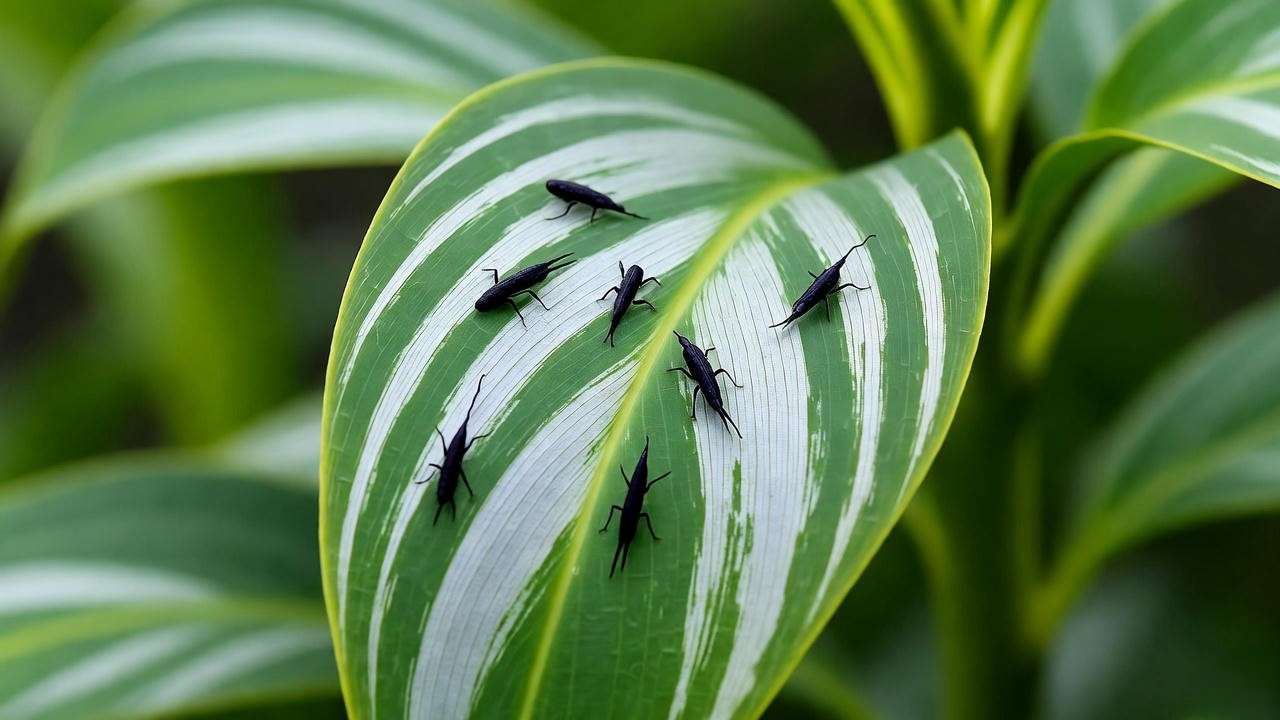
How to Differentiate Between These Pests 🔍
To identify the pest, observe where they appear and the damage they cause. Aphids cluster on stems, fungus gnats hover near soil, spider mites create webs, and thrips cause silvery streaks. Use a magnifying glass or smartphone macro lens for a closer look. Here’s a quick comparison:
| Pest | Appearance | Signs of Infestation | Damage |
|---|---|---|---|
| Aphids | Soft-bodied, clustered | Sticky honeydew, curled leaves | Sap loss, virus transmission |
| Fungus Gnats | Small dark flies, soil-based | Larvae in soil, wilting plants | Root damage |
| Spider Mites | Tiny specks, fine webs | Speckled leaves, webbing | Sap loss, leaf drop |
| Thrips | Slender, fast-moving | Silvery streaks, distorted leaves | Reduced photosynthesis |
Expert Tip: Shake a plant gently over a white sheet of paper. If tiny black bugs fall off, examine them closely to confirm their identity.
The Damage Tiny Black Bugs Cause to Your Plants 😱
Tiny black bugs can wreak havoc on your plants. In the short term, they cause yellowing leaves, wilting, or slowed growth as they feed on sap or roots. Over time, severe infestations can lead to plant death, especially if untreated. Aphids and thrips may spread viruses, while fungus gnat larvae weaken root systems, making plants susceptible to secondary infections. Spider mites reduce photosynthesis, starving plants. Pests can also spread to nearby plants, turning a small problem into a garden-wide issue. Case Study: A gardener in Oregon saved her tomato plants from aphids by combining neem oil with companion planting, restoring her harvest within weeks.
Step-by-Step Solutions to Eliminate Tiny Black Bugs 🛠️
Immediate Actions to Take 🚨
Act fast to limit damage. Isolate affected plants to prevent pests from spreading. Remove heavily infested leaves or debris and dispose of them in sealed bags. Rinse plants with a gentle water spray to dislodge pests like aphids or spider mites. For indoor plants, place them in a sink or shower for a thorough rinse. Avoid spreading pests via tools or hands—clean everything after handling infested plants.
Organic and Natural Remedies 🌱
Organic solutions are safe and effective for most infestations. Here are the best options:
- Neem Oil: This natural pesticide disrupts pest life cycles. Mix 1 tsp neem oil with 1 quart water and a few drops of dish soap. Spray plants every 7–10 days, focusing on leaf undersides. Test on a small area first to avoid leaf burn.
- Insecticidal Soap: Safe for most plants, this soap suffocates soft-bodied pests like aphids. Apply ready-to-use sprays or mix your own (1 tbsp mild liquid soap per quart of water). Spray thoroughly, repeating every 4–7 days.
- Diatomaceous Earth: Sprinkle food-grade diatomaceous earth on soil to kill fungus gnat larvae. Reapply after watering. Use a mask to avoid inhaling dust.
- Beneficial Insects: Introduce ladybugs or predatory mites to control aphids or spider mites. Release them at dusk to ensure they stay in your garden.
Expert Tip: Always apply treatments in the early morning or late evening to avoid harming beneficial pollinators like bees.
Chemical Treatments (When Necessary) ⚗️
For severe infestations, chemical pesticides may be needed. Choose products labeled for your specific pest (e.g., pyrethrin-based sprays for aphids). Follow label instructions carefully to avoid harming plants or pollinators. Apply in well-ventilated areas and avoid overuse, which can lead to pest resistance. Reserve chemical treatments for cases where organic methods fail, such as widespread thrip infestations.
Targeting Specific Pests
- Aphids: Use yellow sticky traps to capture adults, spray with insecticidal soap, or plant marigolds nearby to repel them.
- Fungus Gnats: Let soil dry out between waterings to kill larvae. Apply beneficial nematodes to soil for long-term control.
- Spider Mites: Increase humidity with regular misting or a humidifier. Use miticides for severe cases, but rotate products to prevent resistance.
- Thrips: Place blue sticky traps near plants, spray with neem oil, and prune heavily affected areas.
Preventing Future Infestations 🛡️
Cultural Practices for Healthy Plants
Preventing tiny black bugs starts with creating an environment where plants thrive and pests struggle. Proper watering is key—overwatering creates soggy soil that attracts fungus gnats, while underwatering stresses plants, making them vulnerable to aphids and spider mites. Water only when the top inch of soil feels dry, and ensure pots have drainage holes. Use well-draining soil mixes, such as those with perlite or sand, to avoid waterlogged conditions. Space plants adequately to improve air circulation, reducing humidity that spider mites and thrips love. Fertilize regularly with a balanced, water-soluble fertilizer to keep plants strong, but avoid over-fertilizing, which can attract pests. Expert Insight: A healthy plant is like a fortress—pests are less likely to breach its defenses.
Regular Monitoring and Maintenance 🔧
Routine checks are your best defense against infestations. Inspect your plants weekly, looking for sticky residue, webbing, or discolored leaves. Use a magnifying glass to spot tiny pests early. Clean pots, trays, and tools with a mild bleach solution (1:10 ratio) to prevent pest transfer. For houseplants, wipe leaves with a damp cloth to remove dust and potential pest eggs. Expert Tip: Keep a garden journal to track plant health and pest sightings, helping you spot patterns and act quickly. Professional growers use similar monitoring techniques to maintain pest-free greenhouses, and you can adapt their methods at home.
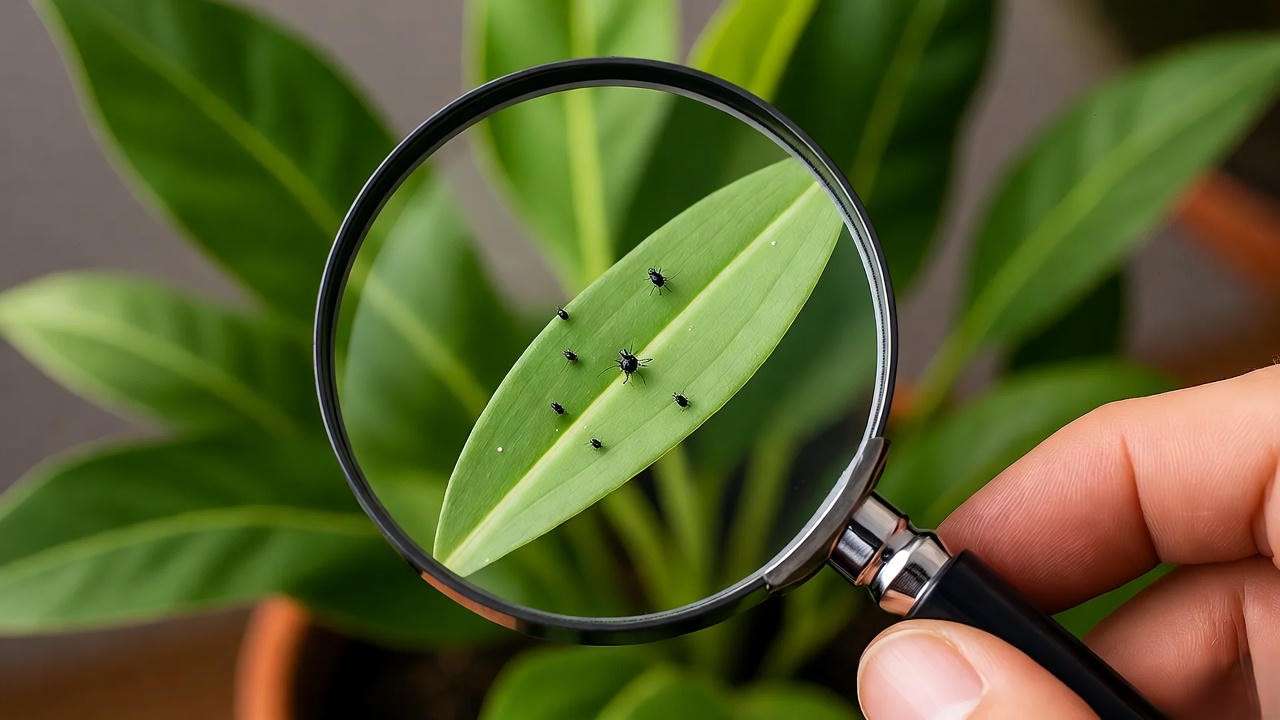
Companion Planting and Natural Deterrents 🌼
Companion planting is a natural way to repel tiny black bugs. Plants like garlic, chives, and marigolds emit odors that deter aphids and thrips. Nasturtiums attract aphids away from your main crops, acting as a sacrificial plant. Integrate these companions into your garden layout—plant marigolds around vegetable beds or place garlic near roses. Other deterrents include sprinkling crushed eggshells around plant bases to discourage crawling pests or using reflective mulch to confuse thrips. These methods not only reduce pests but also enhance your garden’s biodiversity and beauty.
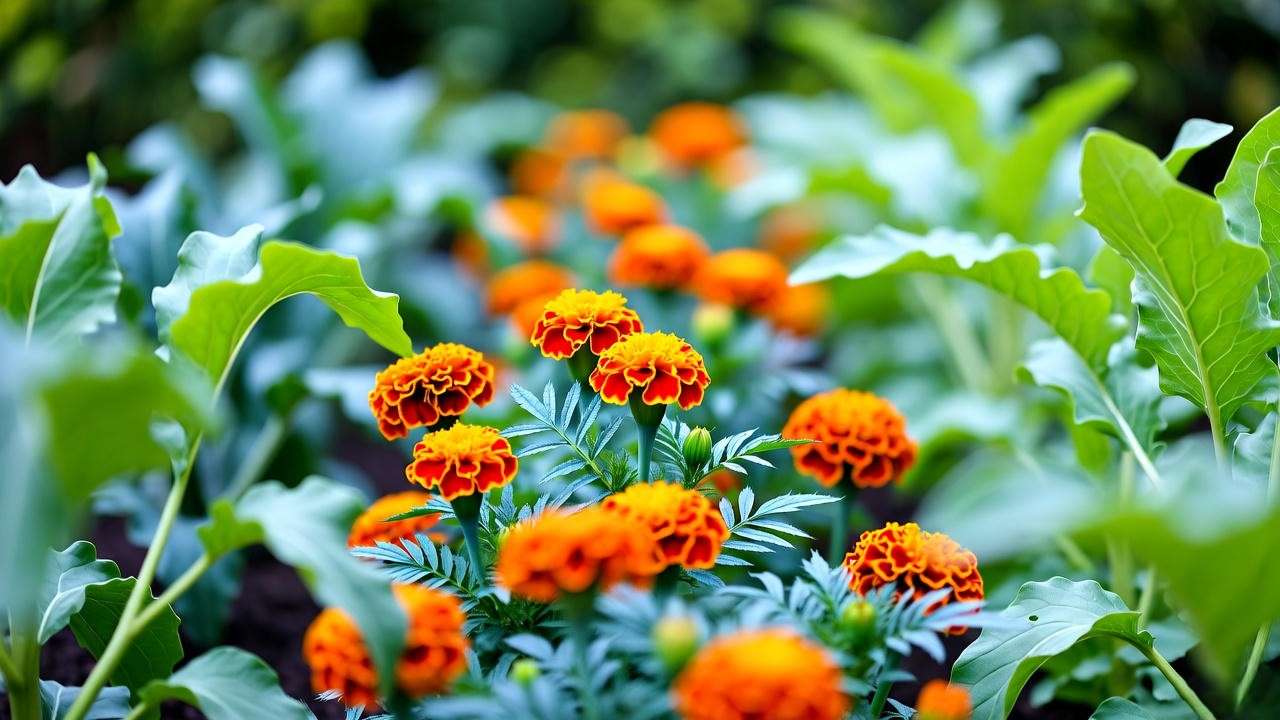
Common Mistakes to Avoid When Dealing with Tiny Black Bugs 🙅♀️
Even seasoned gardeners make mistakes when battling pests. Here are pitfalls to avoid:
- Overusing Pesticides: Excessive use of chemical or even organic pesticides can harm plants, kill beneficial insects, or lead to pest resistance. Stick to recommended doses and schedules.
- Ignoring Early Signs: Dismissing a few bugs as “no big deal” allows infestations to spread. Act at the first sign of trouble, like sticky leaves or wilting.
- Misidentifying Pests: Treating spider mites with fungus gnat solutions won’t work. Use the identification table above to confirm the pest before acting.
- Neglecting Plant Health: Weak plants are pest magnets. Ensure proper light, water, and nutrients to boost resilience.
Example: A reader shared how overwatering her indoor pothos led to a fungus gnat explosion. By drying out the soil and applying diatomaceous earth, she eliminated the pests in two weeks.
FAQs About Tiny Black Bugs on Plants ❓
What Are the Tiny Black Bugs on My Plants?
Tiny black bugs on plants are often aphids, fungus gnats, spider mites, or thrips. Use a magnifying glass to check for specific signs like honeydew (aphids), webbing (spider mites), or silvery streaks (thrips). Refer to the identification table for clarity.
Are Tiny Black Bugs Harmful to Humans?
Most tiny black bugs on plants, like aphids or fungus gnats, are harmless to humans. They don’t bite or carry diseases that affect people. However, wash your hands after handling infested plants to avoid transferring pests or irritants.
Can I Save a Heavily Infested Plant?
Yes, with prompt action. Isolate the plant, prune heavily damaged areas, and apply treatments like neem oil or insecticidal soap. If roots are damaged (e.g., by fungus gnat larvae), repot in fresh soil. Recovery may take weeks, but consistent care can save most plants.
How Do I Prevent Bugs from Spreading Indoors?
For houseplants, isolate new plants for 2–3 weeks before adding them to your collection. Use sticky traps near pots, avoid overwatering, and clean plant leaves regularly. Check soil for larvae before bringing outdoor plants inside.
What’s the Best Organic Treatment for Tiny Black Bugs?
Neem oil and insecticidal soap are top choices. Neem oil disrupts pest reproduction, while soap suffocates them. Combine with cultural practices like proper watering for best results. Test treatments on a small area first.
Conclusion
Tiny black bugs on plants, whether aphids, fungus gnats, spider mites, or thrips, don’t have to spell disaster for your garden. By identifying the pest, applying targeted treatments, and adopting Snowden: adopting proactive measures like companion planting and regular monitoring, you can keep your plants pest-free. Start inspecting your plants today and use these expert tips to create a thriving, healthy garden! 🌿 Call to Action: Download our free pest identification checklist (link to be created) to simplify your pest control journey. Share your experiences in the comments—we’d love to help you troubleshoot!

